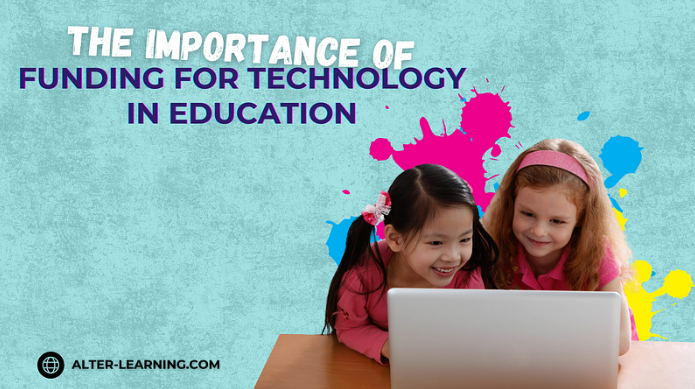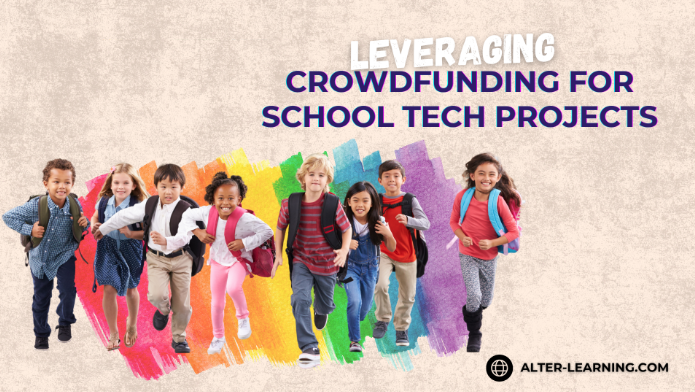As technology continues to reshape how we live, work, and learn, classrooms are evolving too. From immersive learning environments to interactive STEAM educational games, digital tools can help create more engaging, inclusive, and effective learning experiences. But access to these tools doesn’t happen by accident – it requires investment. Adequate funding for technology in education is not just about gadgets and devices; it’s about creating opportunities for all students to develop the skills they’ll need for the future.
Without thoughtful, sustained investment, the potential of educational technology remains out of reach for many classrooms, widening existing gaps rather than closing them.
Technology as a Gateway to Opportunity
Educational technology can help bring learning to life. With the right tools, students can:
- Explore interactive STEAM learning, tackling science games for kids, math puzzle games, and engineering challenges for students,
- Engage with immersive learning environments, from virtual chemistry labs to AR biology exploration,
- Build critical thinking and collaboration through co-op and multiplayer educational platforms,
- Access personalized learning experiences that meet diverse needs and abilities.
These resources can support curiosity, creativity, and confidence—but only when they’re accessible to all learners, not just the best-resourced schools.
The Risk of Unequal Access
Without adequate funding, technology risks becoming another source of educational inequality. Schools with limited budgets may struggle to:
- Provide up-to-date devices or reliable internet access,
- Implement interactive VR simulations, XR educational content, or other emerging tools,
- Train educators to integrate technology effectively,
- Maintain accessible platforms for students with diverse learning needs.
As a result, students in underfunded schools may miss out on the same immersive, engaging learning experiences available elsewhere—leaving them at a disadvantage in an increasingly digital world.
What Investment in Educational Technology Can Support
When funding is allocated strategically, technology can empower teachers and students alike. Some key areas where investment makes a difference include:
- Device accessibility, ensuring all students have reliable tools for digital learning,
- High-speed connectivity, so interactive, web-based platforms function properly,
- Professional development, helping educators confidently use technology in lessons,
- Accessible design, supporting students with learning differences, sensory needs, or language barriers,
- Curriculum-aligned platforms, offering interactive content that meets academic standards.
With these foundations in place, schools can create more inclusive, engaging, and effective learning environments.
The Role of Partnerships and Collaboration
Public funding is essential, but partnerships with educational platforms, developers, and community organizations can also play a role in making technology accessible. Many immersive learning platforms, including those designed to support interactive STEAM education, work directly with schools to:
- Run pilot programs that provide early access to tools and resources,
- Offer scalable licensing models to reduce costs for large classrooms or districts,
- Provide ongoing updates, accessibility improvements, and curriculum alignment,
- Gather feedback from educators to refine tools for real-world classroom use.
These collaborations can help stretch budgets while ensuring technology remains relevant and effective.
While devices and connectivity are vital, funding for educational technology should also support:
- Content development, ensuring engaging, standards-aligned digital resources are available,
- Equity initiatives, addressing access gaps for underserved communities,
- Student well-being, integrating social-emotional learning and digital wellness into tech-based instruction,
- Innovation, allowing schools to explore emerging technologies like AR learning experiences, VR coding tutorials, and more.
This holistic approach ensures technology enhances—not replaces—human-centered teaching and learning.
Investing in the Future of Learning
Educational technology can help create classrooms where learning is interactive, inclusive, and connected to the world beyond the school walls. But achieving that vision takes more than good ideas—it takes investment. Funding for devices, infrastructure, training, and accessible design is not just a technology expense—it’s a commitment to educational equity and student opportunity.
With the right resources in place, technology becomes more than a tool—it becomes a bridge, connect
Follow Alter-Learning for more insights into immersive education, edtech success stories, and the future of learning. Want to explore how VR/AR could transform your school or learning platform? Let’s connect.




